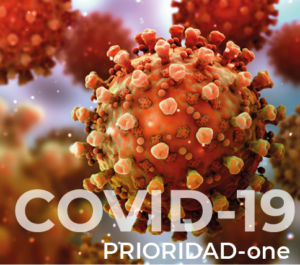The Ministry of Health of the Government of Spain has made information available to citizens on its official website.

SEPSIS and COVID 19


COVID 19 is a virus from the coronavirus family, also known as SARS-CoV-2, which is transmitted by air, that is, through coughing, sneezing and breathing by infected people, spreading very easily. to other healthy people.
One of the peculiarities that make this virus more dangerous and more difficult to control is that it can affect people without apparently developing symptoms. This is what experts call presymptomatic transmission. Therefore, an infected person can spread the virus to many people around them who will later develop respiratory infection with greater or lesser intensity depending on their individual response. After infection through the respiratory tract, people go through a variable incubation period depending on their own characteristics and, later, the first symptoms appear that can make us think of a contagion.
During this period, in which the asymptomatic patient does not receive any treatment, they only have their defenses to fight the virus. However, people's defenses, and especially those of risk groups, are not enough to neutralize it and it can end up causing severe pneumonia and a response from the body that leads to sepsis. It is this response of the organism that causes the death of the patient in the most serious cases.
There are many pathogenic microorganisms that can trigger this serious clinical complication, including bacteria, fungi and, of course, viruses.
The danger of COVID 19, as with other viruses, is that there is currently no specific drug for its treatment. However, within the therapeutic arsenal we have different drugs that can help improve the patient's situation and even cure him. When a pandemic of these characteristics occurs, the scientific community sets to work to find vaccines and specific treatments. For this reason, until we manage to develop them, we use the most effective drugs available for this group of diseases.
When we write this information, we already know that the virus IT DOES NOT EXCLUSIVELY AFFECT THE SO-CALLED RISK GROUPS such as elderly people, immunosuppressed people or patients with other previous pathologies such as cardiovascular diseases, diabetes, leukemia, etc. who are the people most at risk from the virus. The virus also poses a risk to young people, in good health and physical condition, who may suffer the consequences of this infection and even lose their lives. For this reason, it is very important to follow the recommendations of the health authorities, since measures such as confinement at home, the reduction of social contacts, the limitation of movements and the application of all kinds of measures that help us to maximize hygiene are more now more than ever VITALS.
When a case of COVID 19 occurs in the family environment or in closed institutions, such as a nursing home for example, it is very important that all people who have been in contact with the identified patient (with confirmed COVID 19) contact each other. quarantine and communicate their situation, through the channels of the territory where they live, to the health officials in order to guide the necessary protection measures for their health.
If you have a family member admitted or someone close to you with the infection in quarantine or symptoms of the disease, you should trust the health professionals. They will everything in their power to care for you and the patients and provide them with the best possible care, even at risk to their own health.
There is no such thing as “coronavirus sepsis”, since sepsis can be triggered by any other pathogen and, therefore, all the information we provide in this section related to sepsis caused by respiratory tract infections (pneumonia) is perfectly valid. for cases of COVID 19 infection.
This information is informative in nature and therefore does not replace what you may receive from health professionals.

